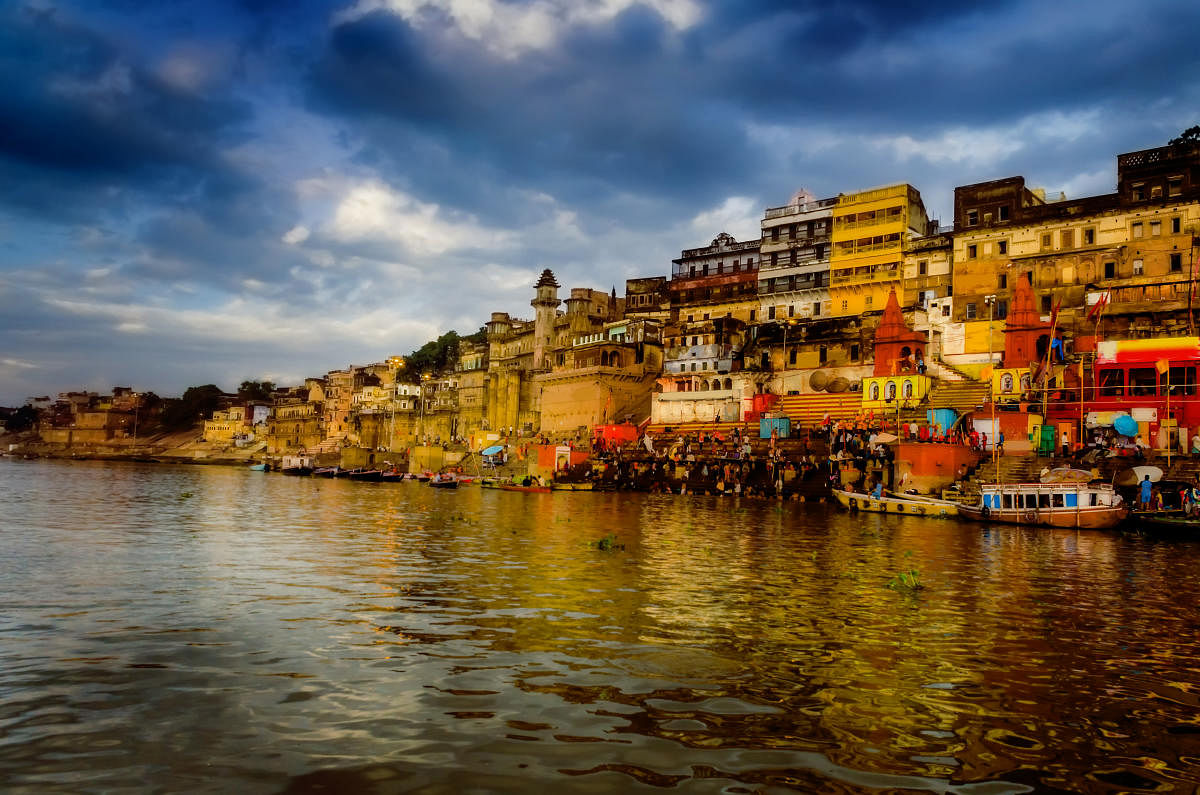Aawa-aawa paisa kamawa
Ek lagawa du kamawa
Du lagawa char kamawa
Kuch na lagawa
Ghantta hilawa ....
And so it goes on, this hilarious doggerel in vernacular Hindi, sung raucously by young scamp Chintu, the partner-companion of Choti, a street performer who earns her meagre living by walking the tightrope in Varanasi’s ghats and lanes. Thus begins one of the early chapters in a debut novel from a popular name, the celebrity chef, New York-based Vikas Khanna. Khanna is known for his cookbooks, TV shows, his remarkable life, captured through Ted Talks and documentaries. He sparkles on the small screen. And here he is in a new avatar, with a novel set in Varanasi, the eternal city where life and death meet continuously, on one stage, a colourful city where ‘the last colour is the colour of ash.’
These words are from Noor, one of the two protagonists of this sweet–sombre book that is also surprisingly layered and deep, and occasionally even funny. Surprising, since I had uncharitably expected it to be a lightweight affair, a film turned novel. For that is what it is — a story that started as a novel, remained unpublished, took life as a film directed by author Vikas, and is now being presented to the public as a book. The film, whose trailer was premiered at the Cannes film festival early in May this year, is to release internationally, soon enough. But meanwhile, here is the book — lavishly illustrated with colour plates from the film — and consequently, some characters get a face. The cover features veteran actress Neena Gupta as Noor, the aged Varanasi widow who finds her own dreary life enlivened by her contact with young Choti, the orphaned 10-year-old performer-scrounger-survivor of Varanasi’s mean streets.
The novel starts in New Delhi, at the time of Holi festival, 2012. A young advocate, adopted daughter of a righteous journalist mother, is stepping out on a journey to right a wrong, in Varanasi, where she had experienced the unconditional love of a doomed Varanasi widow, 20 years back. She is now going there to ensure that the recent Supreme Court ruling is adhered to in spirit and letter, that Varanasi’s white-clad widows can experience the colours of Holi, unfettered by old taboos. And as she steps into the hallowed space of her wretched childhood, a widow-ashram, the echoes and memories come crowding back. What follows is obviously a recall.
Choti is seen to be this feisty spirited young urchin, perpetually underfed, giving it back to her regular tormenters, the bribe-happy brigade of local police goons that roam and trouble the underclass of small-town India. When fellow orphan Chintu disappears with her money, her invectives flow easily, causing merriment in the reader as well as Noor, the widow she has befriended. Ironically, Chintu is there for her finally when it matters.
Meanwhile, Noor opens up, about her short-lived childhood that was full of grace, wisdom, colour, even literature, until it all ended with early marriage and widowhood. But she wants Choti the aerial artiste to fly free of her confines; the dormant mother in her strives to do all she can to change Choti’s trajectory. And Choti, in turn, wants Noor to experience the colours of Holi, sometime, somehow.
The other characters — Anarkali, the transgender friend and soulmate of Choti, the brutish Inspector Raja, his quiet steely-nerved wife with three daughters, Asha, the unforgiving widow...it’s a regular rogue’s gallery of a timeless place that is home to the good, the bad and the downright nasty.
Meanwhile, Noor, a widow who has resigned herself to her fate through half a century of colourless abstinence, finds meaning again, a reason to live — all for a young spitfire in whom she sees hope, potential change.
Besides friendship, other undercurrents can be felt. Anarkali’s back-story is shocking and touching, as is her present. Towards the end, the novel becomes a thriller, a time-race against uniformed villains. And ironically, even a Holi packet of pink powder plays a role.
Expectedly, the city becomes a character, important and definitive. The Varanasi air is described as a ‘potent combination of dust, sandalwood...the vibrations of chants and slokas, the mist of Ganga, the death crackle of burning pyres, and of course, the spirit of survival.’
The writing is often visual; ‘Thin rickshaw pullers struggled through the morning rush.’ Occasionally, there is a bit of over-explanation, aimed at the international reader. But these moments are rare. What stays are the life-insights and positive wisdom of Varanasi’s denizens.
The story moves on, finding resolution through Varanasi’s geography and Choti’s special skills. It then returns to the present and one closes the book remembering the characters, aware that the good and patient will survive into a better future.
